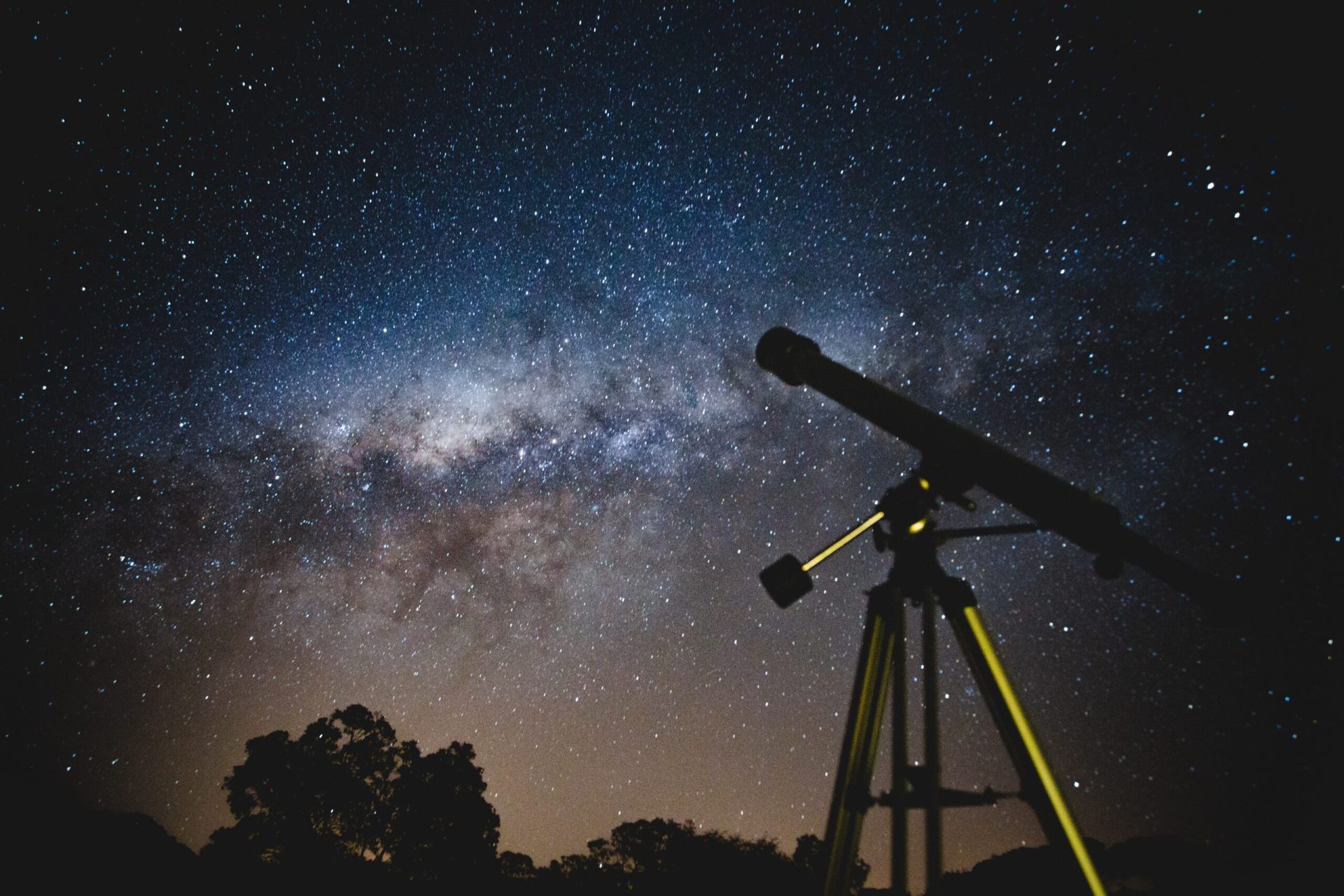|
Only have a minute? Listen instead
Getting your Trinity Audio player ready...
|
By CAROL LEE LUTSINGER | NASA/JPL SOLAR SYSTEM AMBASSADOR
Warning: With interest in astronomy comes a mysterious urge to have a telescope of one’s own. I have heard from several of you who are interested in buying telescopes for children for Christmas presents.
May I encourage you to research well before taking the plunge? Inexpensive department store scopes are not sturdy and will most likely disappoint both parent and child. Instead, bring your family to public events where telescopes are available to become familiar with what a good telescope offers. The images on the boxes and on the internet sites and astronomy magazines are the result of hours of CCD camera imaging and Photoshop. Our local astronomers who willingly share whenever possible will be happy to talk to you about what to expect.
If you stand facing east, the V of stars marked by a definitely ruby-red star on the left is an asterism called the Hyades and it is part of Taurus the Bull. At this time of year, the quintet of fairly bright stars is easier to pick out. Taurus is having a stand-off with Orion, the huge butterfly shaped constellation rising in the east by ten o’clock P. M. Known as Orion the Hunter to ancient Greeks and Romans, it is known as Long Sash by the Pueblo and First Slender One by the Navajo.
Long Sash led his people westward to a new land away from their enemies who were attacking villages and causing mayhem. Once settled in this new land the people began to quarrel and fight among themselves. Long Sash declared, “You are hurting yourselves worse than your enemies hurt you. If you are to come to a place of your own, there can be no violence among you. You must decide whether you will follow me or take another trail.” To the Navajo, First Slender One represented planning and consideration. The Gemini stars were the place of decision, to go one direction or the other. In these cultures, instead of twins, Gemini
is a double tipped split arrow with the arrowheads pointing in opposite directions.
There are several opportunities for meteor shower viewing during December, weather permitting. December brings two meteor showers, the Geminids, whose peak performance is expected in the early morning hours about 2:00 AM our time on December 13-14 and the Ursid meteor shower that peaks on the 23nd. An added bonus for December includes the winter solstice on December 21.
Meteor showers are generally the result of passing comets. However, the Geminids are not leftover comet dust; they are debris from a distant rocky object thought to be an asteroid named 3200 Phaethon. This asteroid hardly sheds debris so the amount of “falling stars” cannot be explained readily and is still a bit of a mystery. Current theory is 3200 Phaethon is a strange hybrid of an asteroid and a comet. This “rock-comet” isn’t icy, like a comet is. But it’s known to brighten as it nears the sun, as comets do. And it has a tail. scientists have long puzzled over 3200 Phaethon. How can a rocky asteroid leave behind debris that sparks a meteor shower? Where does its tail come from? As the largest debris stream that Earth passes through on its annual orbit around the Sun, the stream left by the asteroid outweighs other meteor shower event streams “by a factor of 5 to 500,” says NASA astronomer Bill Cooke. “This makes the Geminids the 900-lb gorilla of meteor showers. Yet 3200 Phaethon is more of a 98-lb weakling.”
Until next week, KLU





